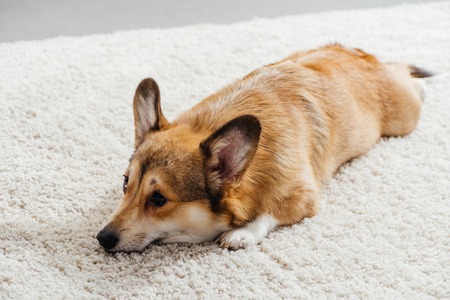Understanding the Importance of a Garden Memorial
Losing a cherished pet is an emotional experience for many British families, and finding a meaningful way to honour their memory can support the grieving process. In the UK, gardens are not just outdoor spaces—they are treasured extensions of the home, often reflecting personal stories and connections with nature. Creating a dedicated garden memorial allows you to celebrate your pet’s life while embracing these cultural traditions. Such memorials offer a peaceful retreat for reflection, fostering healing through the gentle rhythms of gardening and the comfort of nature. This practice also aligns with Britain’s longstanding appreciation for garden spaces as places of solace and remembrance. By dedicating part of your garden to your pet, you create a living tribute that evolves with the seasons, echoing the enduring bond between you and your beloved companion. The table below highlights some key benefits associated with establishing a garden memorial in British homes:
| Benefit | Description |
|---|---|
| Emotional Healing | Provides a comforting space to process grief and cherish memories. |
| Connection with Nature | Encourages mindful time outdoors, which is known to improve wellbeing. |
| Cultural Tradition | Reflects British values of remembrance and love for gardens. |
| Personalisation | Allows creative expression in honouring your pets unique spirit. |
By understanding these benefits, you can appreciate why so many in the UK choose to commemorate their pets within their own gardens, blending heartfelt tradition with the restorative power of nature.
Choosing the Perfect Spot in Your British Garden
Selecting a tranquil and meaningful location for your pet’s memorial is a heartfelt process that can bring comfort to your family. In British homes, gardens are cherished spaces, often designed for both beauty and privacy. When choosing the right spot, it’s important to consider several factors to ensure the memorial complements your garden’s layout and serves as a peaceful retreat for remembrance.
Privacy and Tranquillity
British gardens often feature fences, hedges, or mature shrubs that create natural boundaries. For a private memorial, look for secluded corners away from busy areas of the garden, such as patios or play spaces. This helps foster a sense of peace where you can reflect without interruption.
Sunlight and Shelter
The UK’s weather can be unpredictable, so think about how much sunlight or shelter your chosen spot receives throughout the year. A balance between dappled light and shade keeps flowers thriving and creates a comfortable setting for visits. Areas under established trees or near flowering borders work well, but avoid spots prone to waterlogging during rainy months.
Accessibility
Your pet’s memorial should be easily accessible for regular visits, tending flowers, or placing tributes. Consider paths or stepping stones if the location is at the back of the garden. Also, make sure its safe for all family members to reach, especially children or elderly relatives.
Comparison Table: Ideal Memorial Locations in British Gardens
| Location | Privacy | Sunlight | Accessibility |
|---|---|---|---|
| Under a Mature Tree | High | Partial Shade | Easy with Pathway |
| Near a Garden Shed or Summerhouse | Moderate | Full Sun/Partial Shade | Very Easy |
| In a Flower Border | Moderate-High | Full Sun | Accessible with Careful Planning |
By thoughtfully selecting your garden memorial’s location, you create a lasting tribute that fits harmoniously within your British home, offering solace and happy memories for years to come.
![]()
3. Selecting Memorial Elements and Plants
Choosing the right elements for your pet’s garden memorial is a deeply personal process, and drawing inspiration from classic English gardens can make it both meaningful and beautiful. Many British homeowners opt for traditional plants and flowers that symbolise remembrance, resilience, or joy—traits that often remind us of our cherished companions. Below is a table highlighting popular options, their meanings, and why they are well-suited for a British garden memorial:
| Plant/Flower | Symbolism | Why Choose It? |
|---|---|---|
| Forget-me-nots | Remembrance, lasting love | Easy to grow, blooms in spring, and their delicate blue flowers serve as a gentle reminder of your pet. |
| Lavender | Calm, devotion | The soothing scent and classic purple hues add tranquillity and elegance to your space. |
| Roses (especially white or pink) | Purity, love, gratitude | A quintessential English flower; roses can be chosen to match your pet’s personality or the memories you shared. |
| Bluebells | Humility, gratitude | A native woodland flower in the UK, bluebells bring natural beauty and symbolism to shaded areas. |
Alongside planting, many families select personalised ornaments to enhance the commemorative aspect of the garden. These may include engraved stones with your pet’s name, small wooden signs with meaningful quotes, or even bespoke sculptures or paw print plaques. Water features like birdbaths or small fountains also offer a peaceful focal point while attracting wildlife—a lovely nod to pets who enjoyed watching birds or exploring outdoors. When planning your memorial area, consider combining living plants with these personal touches to create a harmonious spot reflective of both the traditional British aesthetic and your unique bond with your pet.
4. DIY Memorial Features and Keepsakes
Creating a personalised memorial for your pet can be a deeply meaningful part of the grieving process, especially when you craft it with your own hands. In the UK, garden centres and high street shops offer a variety of materials perfect for making bespoke stepping stones, plaques, or memory boxes. These simple DIY projects not only serve as lasting tributes but also allow you to reflect on cherished memories as you create them.
Stepping Stones
Stepping stones are a popular way to incorporate a pet memorial into your garden path or flower beds. You can purchase plain concrete stepping stones from most British garden centres and decorate them using mosaic tiles, pebbles, or glass beads—widely available at local craft shops. Consider pressing your pet’s name, paw print (if available), or a special date into the wet cement before it sets. Paints suitable for outdoor use can be found at DIY stores such as B&Q or Homebase, allowing you to add colour and personality to each stone.
Plaques
Plaques are another classic way to mark a special spot in your garden. Wooden blanks or slate plaques can often be found at hardware shops and garden centres across the UK. Use wood-burning tools, outdoor paint pens, or even engraved metal plates (available at Timpson’s or similar high street services) to inscribe your pet’s name and a short message. Mount the finished plaque on a wall, fence, or tree in your favourite corner of the garden.
Memory Boxes
A memory box is ideal for storing treasured keepsakes like collars, tags, toys, or photographs. Many British craft stores sell unfinished wooden boxes that you can paint or varnish to withstand outdoor weather. Line the inside with felt for an extra touch of comfort and add decorative elements such as pressed flowers from your garden or small tokens that remind you of your pet.
Common Materials Found in UK Shops
| Item | Where to Find |
|---|---|
| Concrete Stepping Stones | Garden Centres (Dobbies, Wyevale) |
| Mosaic Tiles/Glass Beads | Crafters Companion, Hobbycraft |
| Wooden/Slate Plaques | B&Q, The Range |
| Outdoor Paint & Sealant | Homebase, Wilko |
| Memory Boxes | The Works, Hobbycraft |
Tip:
If you’re unsure about which materials will withstand British weather conditions, ask staff at your local garden centre—they’re usually happy to advise on weatherproofing finishes and suitable paints.
5. Respecting Local Guidelines and Wildlife
When creating a garden memorial for your pet in the UK, it’s essential to follow local regulations and consider the impact on wildlife and your community. The UK has specific rules regarding pet burials, especially if you wish to bury your pet at home. Most councils allow domestic pets such as cats, dogs, and small mammals to be buried on private property, provided certain conditions are met. These include ensuring the burial site is on land you own, not near water sources, and at a sufficient depth to prevent disturbance by wildlife. Below is an overview of key guidelines:
Regulation Aspect |
Requirements |
|---|---|
Location |
Bury only on your own land; avoid shared or rented gardens. |
Depth |
Minimum of 2 feet (about 60 cm) above the body to prevent scavenging. |
Proximity to Water |
At least 50 metres from any water source (wells, streams). |
Container Material |
Use biodegradable materials (cardboard, wooden caskets) rather than plastic. |
Type of Animal |
Allowed for household pets only; livestock require different procedures. |
Eco-friendly memorial options are highly encouraged to protect both the environment and local wildlife. Consider planting native flowers or trees instead of using artificial ornaments or non-biodegradable materials. Avoid using treated wood or chemicals that could leach into the soil. If you choose a commemorative plaque or marker, opt for natural stone or sustainably sourced wood. By respecting these guidelines, you create a lasting tribute that harmonises with your garden and supports British biodiversity while honouring your beloved pet.
6. Honouring Your Pet Through Ritual and Remembrance
Creating a garden memorial for your pet in a British home is not just about the physical space but also about the rituals and acts of remembrance that help you and your family cherish precious memories. In the UK, such customs are often gentle, reflective, and inclusive of all family members.
Suggestions for Memorial Ceremonies
Many families find comfort in holding a small ceremony to mark the creation or unveiling of their garden memorial. This can be as simple or as elaborate as you wish, depending on your preferences and traditions. Consider reading a favourite poem, sharing fond memories, or playing a piece of music that reminds you of your pet. Lighting a candle or planting a special flower together can symbolise love and continuity.
Ideas for Meaningful Rituals
| Ritual | Description |
|---|---|
| Memory Stone Placement | Place a personalised stone with your pet’s name or paw print at the memorial spot. |
| Planting Ceremony | Invite family members to plant bulbs or seeds, representing growth and ongoing life. |
| Candle Lighting | Gather at dusk to light candles and share quiet moments of reflection. |
| Photo Display | Create a weatherproof photo display near the memorial using cherished images. |
Quiet Reflection in the Garden
The British tradition of enjoying peaceful moments outdoors lends itself beautifully to garden memorials. Set aside time to sit quietly by your pet’s memorial—perhaps with a cup of tea—and reflect on happy times spent together. Encourage family members, including children, to use this space for their own private remembrances whenever needed.
Involving Family Members
Involving everyone in the household fosters unity and helps each person process their feelings. Children might like to create drawings or write letters to place at the memorial. Adults may prefer tending to plants or maintaining the area as an ongoing act of care. Sharing stories about your pet during family gatherings keeps their memory alive and supports emotional healing in line with supportive British customs.
A Gentle Approach to Remembrance
The most important aspect is choosing rituals that feel right for your family. Whether it’s through an annual gathering, seasonal planting, or simply spending quiet moments in reflection, these practices honour your pet’s place in your hearts while respecting the thoughtful traditions cherished in UK homes.


